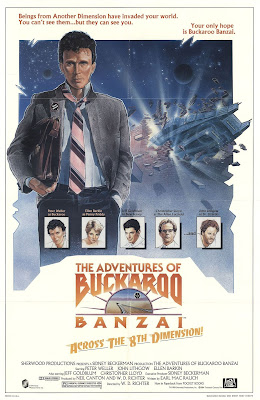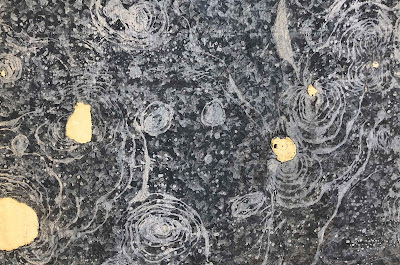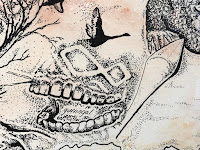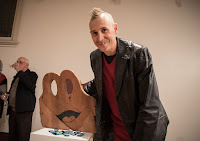Just before Father died, he said I am Aboriginal.
All my life before then he said that, if anyone asked, to say I'm American Indian.
He’d say his mother had flown back there because she shouldn’t have had a baby.
So Father grew up in a religious orphanage.
Then in those final hours he told me his truth.
It's a truth I couldn’t believe.
Father always made jokes and played tricks.
He'd make a coin appear from behind your ear.
But he had no energy to joke in those last hours.
And the truth felt right in my chest, though it didn’t make sense in my head.
But it’s a truth I want you to know.
My father was born at the Mission.
They taught songs about Jesus and those deeds from the Bible.
The Priest would read to them and taught how to be good.
My father learned we are all part of one family and God loves us all.
He was told we love and help each other or there'll be trouble.
They were taught how Noah survived the flood that killed all the sinners.
How Moses parted the waters of the Red Sea to help the Israelites.
Father said his days were filled with hard work.
He had to collect water from the River and wood to boil it.
My father said he would get worried when the River flooded.
The River was dangerous and sometimes people died at the Crossing.
Father would worry that showed God was angry at the men who drank grog at the inns.
When he had to go past the inns, those men would stumble out to call him names.
Sometimes they hurt him and the Priest would say to forgive.
But Father hoped God would punish them.
Punish them for hurting the old men who camped outside the Mission.
Those old men became my father’s uncles.
They taught him the things that he was told to forget.
Things he didn’t teach me because he thought that I’d get taken away.
These are the things I’m trying to learn now to know my people.
Anyway, that’s my story and we’ll get to that another time.
Father said as a child he had funny dreams.
He dreamed Moses put the punt at the Crossing out of business.
Then those mean men couldn't buy grog.
When he got older some Uncles gave him grog.
It tasted like fire and Father worried God would be angry.
The men laughed at him and said grog was Jesus blood.
It still burned to drink, so he pretended it was good.
The Uncles told him that Jesus was a Christian word for their creator.
They told him it was everyone’s god and shared stories like those the Priest told.
How God came down to walk the countryside and feed all the people with fish.
"Listen," they said, "sometimes you’ll hear his secret name."
So Father did listen and he heard a name like a breath, "Jehovah."
Then Father asked the men what's our word for Jehovah.
"Baiame," they said, he's the same but taught the white people differently.
He asked the Priest about Baiame and was told to say Jesus.
So Father thought it might be true.
When my Father was a boy the Uncles told him to listen to the bush.
They spoke with the birds and said that he could too.
Those Uncles told him how to listen to what crows say to each other.
If you count Wagan’s short calls to each other, then you can follow them to food.
Their long sounds tease men, “faaark!”
And the crow will sound sad if you take his meal.
“Be kind to Wagan and he will look out for you,” they taught.
The Uncles told my Father not to make Wagan angry.
“That bird is still upset about things in the past and might take it out on you.”
Long time ago the crow was white and still new to having wings.
Father heard that back then Wagan liked to play tricks and the other birds got annoyed.
That big white bird would do silly things like hide other bird’s eggs.
One day they got angry and pushed him off a branch.
Wagan fell into a fire.
That’s why crows are shiny black.
One day the Priest said Father was ready.
He said he would join another camp and boil water from another part of the River.
Father was sad to leave his friends but the Uncles said "don't worry, we'll be nearby when you need us."
A man with a cart arrived and they gathered his few belongings.
He was brown but his hair was too, not black like the Uncles.
Then everyone gathered to say goodbye and see him leave.
There were tears and prayers, then that man said it was time to leave.
He stepped up onto the cart and Father moved to join him.
"No, you go in the back."
So he climbed on the dirty dray.
The road was rough and the cart got stuck.
"You push," he said and Father got splashed with mud by the horses.
They travelled for hours and the path led out of the bush and into green paddocks.
Father asked "Whose land is this?"
"It's your new master's land," he was told.
My father saw there was a lot of land and wondered if he could get some too.
They travelled further and the green paddocks had fences.
Then the fences held sheep.
After a while they arrived at a big house.
It was bigger than an inn and shone brighter than a new iron shed.
They drove around to the stables and the horses drank water from a trough.
"You clean yourself" and that man pointed at the trough.
A woman came out from the house and spoke to the man.
She came to Father and said he could sleep in the stables.
Father had to find a bed that didn't belong to a horse.
And didn't belong to a rat.
Next day father said he got prodded in the dark.
A woman was there.
The woman showed where there was water in a nearby creek and told him to bring it to the house.
Father jokes, "Why didn't your husband build closer to the water?"
"Don't be stupid," said the kitchen hand.
Father didn't like being called stupid, but he put that away.
"What's a smart thing for me to do?"
The kitchen hand waved her hand toward the paddocks, "If you can get rid of the rabbits then you'll be rewarded."
Father knew the rabbits were good to eat, so there must be a way to catch them.
After all, the Uncles told him ways that Baiame could trap the mighty Cod in the Rivers.
He decided to ask them and told Dyirri Dyirri that he needed them to visit.
That Willie Wagtail did a little dance, like deciding if it was right.
Then the bird left.
Since Father told me this story I’ve learned something about Dyirri Dyirri.
You often see them hanging around because they like to listen to what people say.
Like other critters they used to be people, so they know our words.
They are messenger birds and can tell news if you learn their songs.
I am learning to sing and dance when all our people come together.
At corroboree I do their steps to scare little insects.
This way I hope to make Dyirri Dyirri talk.
Father continued to live in the stables and his days were spent carrying water and wood.
He began to wake early so there’s time to look at the stars.
The Seven Sisters reminded him of friends back at the Mission.
He listened to the birdsong of Gurru who chortles before dawn.
Then at dusk magpie shares what they’ve heard.
At spring he gave that bird scraps of food so he wouldn't peck at his head.
Father noticed that Wagan the crow would often try to steal the magpie's food.
So he fed Wagan too and the crows began to follow along that walk to the creek.
One day Father was returning with the water when there was a sound like thunder.
It was so loud that it frightened a crow and killed it.
As Father looked at that crow and then at the sky, a shepherd from Master’s paddocks approached with a smoking stick.
This was the first time Father saw a gun being used.
That shepherd said crows were as bad as rabbits.
"Where rabbits make holes that cripple old sheep, the crows blind the mothers and kill the lambs" he was told.
Father didn't say anything but was more careful when feeding the crows.
He was also careful to not stay too long at the house.
The Master was a pale round man who bossed people with a singsong voice.
Father learned what was his house and his land and his sheep.
He also learned Master would hit him if Father was sitting down.
So he watched the doorways and windows.
If Father saw Master he'd move faster to get what was needed.
One day the Master called him good and there was a bottle of grog.
He saw that good people get things and wanted to get more.
Eventually Dyirri Dyirri passed along Father's message for the Uncles.
The old men were waiting among the trees one day as he collected wood.
Father asked them if they knew how to catch rabbits and the Uncles nodded.
They wouldn’t say how but then Father gave them that bottle.
They were very happy then.
Father explained he could share more if they would catch all the rabbits.
The Uncles said they would ask around at the next corroboree.
Later the Uncles came back and said Gugaa was fast enough to catch rabbits.
Father asked for him to kill all the rabbits.
The Uncles laughed and said they would ask.
The seasons changed and the green grass turned brown.
Then there wasn't grass because rabbits had eaten it all.
Paddocks were covered with holes and the shepherds lost their jobs.
Father worried he would lose his job.
Then one day he met an old man near the creek.
At first he didn't notice as his clothes were the colour of the dirt and the leaves.
Father thought he looked familiar.
He was lying on the ground licking at the water.
As Father approached the old man’s head turned quickly sideways.
That man had skin that looked dry and then he sniffed at the air.
"Do you ride a horse?" the old man wanted to know.
"No, they don't let me on a horse," said Father.
"I hear you need help with rabbits?"
Father told him about the reward for getting rid of rabbits.
That old man asked to see paddocks and they walked toward the house.
There was a rustling sound among the trees as they walked.
It sounded like the dry leaves on the wind though there was no breeze.
As they stepped out from bushland toward the fence, Father saw that old man’s clothes now looked pale like dry grass.
They stopped near the stable and looked around.
Father was called to the house.
When he got back to the stable, Father looked for the old man but he’d gone.
In the distance a goanna was climbing up a tree.
He knew goannas ate eggs and Father also liked eggs.
A magpie pecked at that goanna but it kept climbing to the nest.
Then Gurru tried to grab the lizard but it held onto the tree.
The bird was angry noises but that goanna didn't stop.
Father watched as magpie saw her eggs get eaten.
Over the following months a stink started to follow the wind.
It was a smell like death.
Father said he noticed no new rabbit burrows after it rained.
Then grass became green and the Master’s sheep grew fat.
It seemed right to ask about the reward for getting rid of the rabbits.
Father asked the kitchen hand and she said it wasn't for her to know.
He asked the stable hands and the shepherds and they laughed.
One day he asked the Master if he thought he'd been good.
Master wanted to know what he had done to be called good.
Father told him he had got the Uncles to send Gugaa to kill all them rabbits.
This made the pale round man happy.
He laughed and laughed and Father thought he had done good.
"Will you give us a reward?"
Master became angry and said he wanted proof Gugaa had got rid of rabbits.
Then told him to go back to getting wood and water.
Father went to find Dyirri Dyirri to ask for the Uncles.
Near the bush he saw sheep that looked round like the Master.
He watched as they lay on their back and gave birth to a lamb.
Father didn't realise that he wasn't the only one watching until Wagan landed nearby.
Those shiny black feathers had flashes of green grass and blue sky.
As that lamb began to bleat, the crow climbed onto the sheep's face and pecked its eyes.
Father said he was scared and sickened.
He thought about throwing a stone at that bird, then remembered what the Uncles had said.
Besides, Father was angry at the Master.
The Uncles were also angry when they heard there was no reward.
They told Father you don't make Gugaa angry.
“He’s like those goannas and might run for a bit but won’t stop walking to wherever you go."
In the weeks that followed new rabbit holes appeared.
On his walks past the paddocks Father heard rustling in the bush.
Sometimes he saw shapes like lizards among the patterns on tree bark.
He saw sheep looking sick with bites on their legs.
The shepherds brought their sheep closer to the house.
Master's machinery rumbled in the distance.
Next morning my Father woke to the sound of Wagan's call.
He had never heard a crow laugh before.
Overnight the stable had become home to lots of new critters.
That morning Father didn't need to walk to the creek.
The paddocks near the bush were underwater.
Then the sheep moved into the stable.
Father heard his master had made a flood.
It filled him with awe for the pale round man.
The Master had brought the River to the house.
Those rabbits drowned in their holes.
But even with all that hay in the stable, them sheep still sick.
Their faces looked a grey green.
Father thought he saw lizards swimming in the water.
Then he grew scared of the Gugaa.
That old man would be angry.
Father wondered if the Master could protect him.
He wasn’t sure who’d win.
So Father began to put eggs around his bed in the stable.
And each morning those eggs would be gone.
Then one morning the flood left the house.
Next morning the water went past the stable.
By the following week it was back at the bush.
Then the creek began to take shape again and the River left the Master’s land.
Around about that time Father saw the Master again.
The round man moved slowly and his pale cheeks looked grey green.
A long line of sulkies began to roll down the road.
All the doctors from all around came to make the Master better.
Father heard from the kitchen hand the maid had seen a bite on his leg.
He worried what’d happen if he lost his job and his bed in the stable.
Father asked Dyirri Dyirri to call for the Uncles.
They said Gugaa had been busy and didn’t dance at the last corroboree.
Father asked where he would go if the Master died.
"You belong to the land and it will take care of you." they said.
He thought that, like Wagan the trickster crow, he could take food from the land.
After all, sheep were stupid to lie there.
Fences didn’t protect them and the stable wasn’t Father’s home.
He decided to be ready to leave.
Weeks later the Master died.
Everyone in the house had to wear black.
They were all sad but Father was happy.
He thought those new clothes made him look like a crow.
Everyone in town went to church to see Master lying in a coffin.
All the doctors too and they argued about that mark on his leg.
All the people agreed he was powerful and he had punished rabbits.
Everyone lined up and walked to his coffin.
They all looked like sheep walking up to a water trough.
Father went outside so he could laugh.
There he saw Gugaa.
The old man stood at the gates.
He was sniffing toward the church.
Father said he asked Gugaa if he had killed the Master.
The old man smiled and his blue tongue licked his lips.
“How about that reward you owe me,” he hissed.
Father said he was sorry.
"Let me give you something," he told Gugaa.
And reached behind one of the old man's small ears to draw something from near his wrinkled neck.
It was an egg.



















































